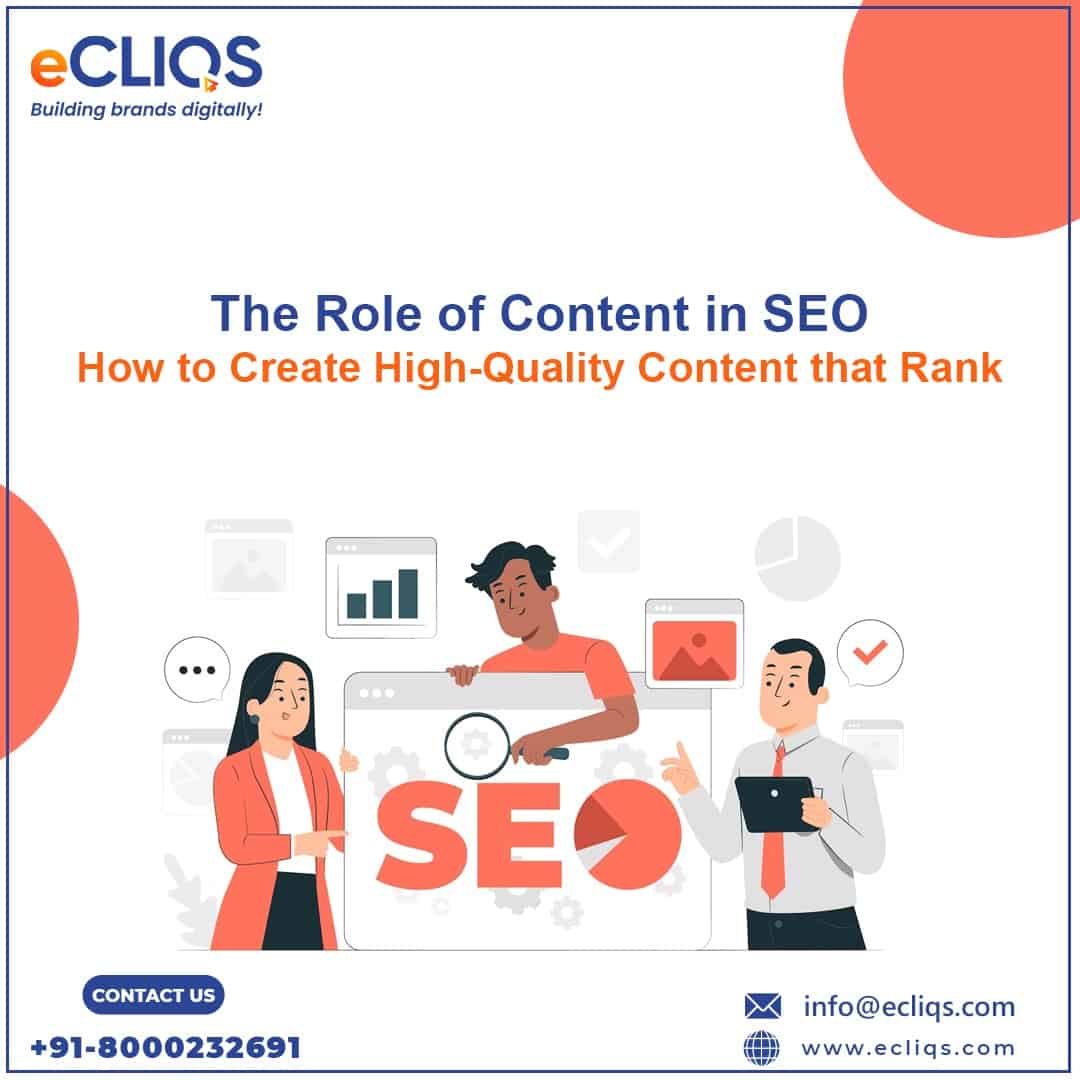How Chat GPT helps in Online Ads?
Online advertising is a competitive and dynamic industry that necessitates ongoing optimization and innovation. If you want to get the most out of your online advertising, you should leverage the use of Chat GPT. It can help you streamline your online advertising campaigns by automating, personalizing, and optimizing them. Here are some ways Chat GPT might help you streamline your online ads.
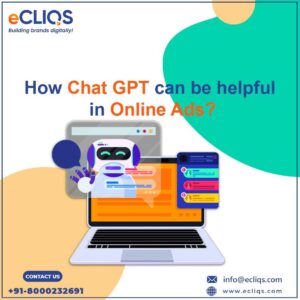
Improving Ad copy:
One of the most important components of a successful ad campaign is appealing ad copy that captures readers’ attention and entices them to click. Chat GPT can be an extremely useful tool in this regard. Chat GPT can develop interesting ad text that resonates with your target demographic by analyzing massive amounts of data and understanding user intent. It can propose compelling headlines, enticing descriptions, and effective calls to action, leading in higher click-through rates and better campaign effectiveness.
Ad Targeting:
ChatGPT can help you target your Facebook advertising to the proper audience using data and insights, boosting the likelihood of success and reducing wasted ad spend.
When it comes to optimizing Facebook advertising for success, data analysis is critical. It goes without saying that it is this expertise that distinguishes a marketer from the crowd.
However, data analysis is not a simple talent to master. Not only must one be familiar with data processing and collection, but also with statistical modeling, A/B testing, and data presentation. All of these are quite competitive.
Keyword Targeting:
Using the proper keywords ensures that your adverts are shown to the relevant people. Chat GPT can help you improve your keyword targeting by making keyword suggestions and growing your keyword list.
It can also create a wide range of relevant keywords that you may not have considered by studying user inquiries and search trends. It can identify long-tail keywords, semantic variations, and developing trends. This allows you to widen your keyword targeting and get more relevant traffic. Furthermore, Chat GPT can help you optimize your keyword bids. It can recommend bid adjustments to enhance your return on investment (ROI) by evaluating past data and understanding the relationship between keywords and conversions.
It can discover high-value keywords that need higher bids and low-performing keywords that need lower bids. This degree of granularity ensures that you appropriately allocate your money and achieve optimal results.
Optimizing Landing Pages:
While getting traffic to your website is crucial, the ultimate goal of any marketing campaign is to convert that traffic into leads or customers. Chat GPT can substantially help you optimize your landing pages to increase conversions.
Chat GPT can assess your landing page content and make important recommendations using its natural language processing capabilities. It can make copy suggestions, indicate places for development, and provide insights into user preferences and trouble concerns. By following these suggestions, you may develop more convincing, user-friendly, and conversion-focused landing pages.
Chat GPT can also help with tailoring landing page experiences. It can dynamically produce landing page content personalized to each visitor by recognizing user intent and preferences. This tailored strategy boosts relevancy, engagement, and conversion rates.
Providing Valuable Insights:
It can discover emerging trends, market opportunities, and rival strategies by analyzing enormous amounts of data and understanding user behavior.
Chat GPT can help forecast future trends, predict user behavior, and recommend strategic changes. It can examine previous campaign data to detect patterns and optimize bidding techniques.
Conclusion
The future of AI in the Digital Advertising industry is bright, with the potential to greatly enhance the effectiveness and efficiency of advertising campaigns. AI technologies are rapidly evolving and becoming more sophisticated, enabling greater automation and personalisation of ad targeting and optimisation. As data and computing power continue to increase, the capabilities of AI in Digital Advertising will only continue to grow. With its ability to provide deeper audience insights, automate tedious tasks, and detect and prevent ad fraud, AI has the potential to completely transform the Digital Advertising industry in the coming years.
The Importance of Brand Consistency in Social Media Marketing: How to Build Your Brand Identity
Your brand is the face of your company—what you show to potential customers. It not only shapes their first impression of your company and product, but it can also entice them to come back for more business. Maintaining brand consistency produces reliable results and can help form a solid foundation for your marketing strategies.
If you’re interested in learning more about brand consistency, read on. We’ll cover what brand consistency is, how it can help your business, and what you can do to achieve it.
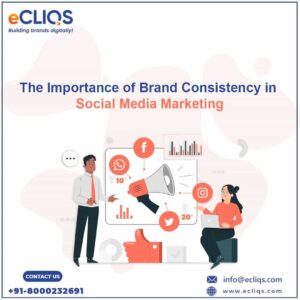
Understanding Brand Consistency:
Brand consistency is the art of presenting a unified and recognizable image across all platforms and interactions. From the visual elements like logos and color schemes to the tone of voice and messaging, consistency builds trust and fosters a sense of reliability among your audience.
The Importance of Brand Consistency:
- Building Recognition: Consistency reinforces visual and messaging elements, making your brand instantly recognizable amidst the sea of content on social media.
- Fostering Trust: A consistent brand image instills trust. When your audience knows what to expect, they are more likely to engage and build a lasting relationship with your brand.
- Creating Cohesion Across Platforms: Social media offers a variety of platforms, each with its unique features. Consistency ensures your brand message remains cohesive, whether it’s a tweet, a Facebook post, or an Instagram story.
- Enhancing Professionalism: A consistent brand image portrays professionalism. It shows that your brand is intentional and invested in delivering a polished and coherent experience.
- Differentiating from Competitors: In a competitive landscape, consistency helps your brand stand out. A cohesive and distinct brand identity gives you a competitive edge by making your brand more memorable.
Strategies for Building Brand Consistency:
- Establish Brand Guidelines: Clearly define your brand guidelines covering elements such as logo usage, color palettes, typography, and tone of voice.
- Create a Content Calendar: Plan your social media content in advance. A content calendar ensures that your messaging is strategic, aligned with your brand, and consistently delivered.
- Visual Consistency: Use consistent visuals across platforms. This includes imagery, filters, and design elements that reflect your brand’s personality.
- Maintain a Unified Tone: Whether your brand voice is friendly, professional, or witty, maintain a consistent tone across all communications. This includes captions, replies, and content descriptions.
- Engage Authentically: Authenticity is key. Engage with your audience in a way that aligns with your brand identity. Respond to comments and messages consistently, and be genuine in your interactions.
Conclusion
Maintaining brand consistency on social media is crucial for businesses that want to create a strong brand image and increase brand recognition. Consistent branding helps establish brand trust, create a cohesive brand experience, improve marketing efficiency, and increase brand loyalty. If you’re looking to improve your social media marketing, be sure to prioritize brand consistency across all social media channels.
The Role of Content in SEO: How to Create High-Quality Content that Rank
There is no doubt that your company requires a strong internet presence to thrive these days. This is where your SEO efforts come in
Search engine optimization is crucial for increasing a website’s visibility and boosting organic traffic. Let’s look at why content is vital for SEO and how it may assist organizations reach their online objectives.
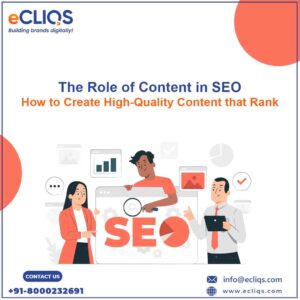
Key Elements of High-Quality Content
- Relevance is Key: Content should be tailored to meet the needs and interests of your target audience. Understanding your audience’s search intent allows you to produce content that directly addresses their queries and concerns.
- Comprehensive and Informative: High-quality content goes beyond surface-level information. Aim to create comprehensive and informative pieces that provide value to your audience. This not only establishes your expertise but also keeps visitors on your page longer, signaling to search engines that your content is valuable.
- Keyword Optimization: While keyword stuffing is outdated and frowned upon, strategic keyword optimization remains crucial. Identify relevant keywords and integrate them naturally into your content. This helps search engines understand the context of your content and improves its visibility for specific queries.
- Engaging and Readable: User experience matters. An engaging and readable format not only keeps visitors on your page but also signals to search engines that your content is user-friendly.
- Authority and Credibility: Establishing yourself as an authority in your field is vital. Back-up your content with credible sources, cite references, and showcase your expertise. Search engines reward content that demonstrates authority, reliability, and trustworthiness.
Strategies for SEO-Friendly Content Creation
- Conduct Thorough Keyword Research: Start by identifying relevant keywords for your industry and audience. Tools like Google Keyword Planner and SEMrush can help you uncover valuable insights into search volumes and competition.
- Create a Content Calendar: Plan your content strategy in advance by creating a content calendar. This not only ensures consistency but also allows you to align your content with seasonal trends, industry events, or product launches.
- Optimize On-Page Elements: Pay attention to on-page SEO elements such as meta titles, meta descriptions, and header tags. These elements provide search engines with essential information about the content and contribute to better visibility.
- Prioritize User Experience: A seamless user experience is crucial for SEO. Ensure that your website is mobile-friendly, optimize page loading times, and create a clear and intuitive navigation structure.
Conclusion
It is obvious that improving your content can significantly raise your visibility and chances of reaching your target audience. If your material is not visible, it may go undetected and fail to generate interaction or leads.
However, by adopting the SEO tactics outlined above, such as writing unique meta descriptions and adding keywords, you can enhance your content’s visibility in search engine results and attract more visitors.
Increasing visibility and exposure with optimized content takes time and work, but the benefits are well worth it. Businesses can increase their online presence and reach their target audience by committing to providing high-quality, optimized content.
Why Website Speed Matters and How to Improve?
Website speed, or website performance, refers to how quickly a browser is able to load fully functional web pages from a given site. Poorly performing sites that render slowly in a browser can drive users away. Conversely, sites that load quickly will typically receive more traffic and have better conversion rates.
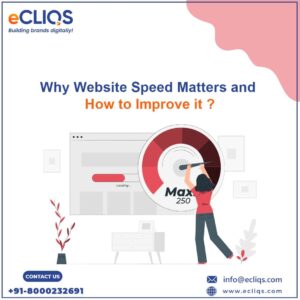
Why Website Speed Matters:
- User Experience (UX): A slow-loading website frustrates visitors and can lead to a high bounce rate. Users expect instant gratification, and a delay of just a few seconds can significantly impact their perception of your brand. A smooth and swift user experience is essential for retaining and converting visitors into customers.
- Search Engine Rankings: Search engines, particularly Google, consider website speed as one of the ranking factors. Websites that load quickly are likely to rank higher in search results. Google’s algorithm values user experience, and fast-loading pages contribute positively to your site’s SEO, potentially increasing your visibility and organic traffic.
- Mobile Responsiveness: With the majority of internet users accessing websites through mobile devices, mobile responsiveness is paramount. Slow-loading pages can be especially frustrating for mobile users, leading them to abandon the site. Google’s mobile-first indexing also emphasizes the importance of a fast and mobile-friendly website.
- Conversion Rates: Website speed directly impacts conversion rates. Studies have shown that even a one-second delay in page load time can result in a significant drop in conversions. Whether you’re selling products, services, or aiming for newsletter sign-ups, a fast website is crucial for encouraging users to take the desired actions.
What factors affect site speed?
- Page Weight: The resources required for website loading significantly affect performance. As web technologies advance and websites become more complex, maintaining a light website (with small file sizes and fast-loading pages) is increasingly challenging.
- Network conditions: Even if a website is designed to be lightweight, it may not load quickly in browsers due to network slowness. The local networking equipment used and the quality of the ISP’s services impact network connectivity. Additionally, mobile devices using 3G or 4G instead of connecting to the Internet over WiFi will typically have slower network connections.
- Hosting Location: If content has to travel a long way to arrive where it is needed, this results in a high amount of network latency. For instance, if a website’s HTML and CSS files are hosted in a data center in Delhi, and its images are hosted in a data center in Kashmir, a user will have to wait while all of these files travel thousands of miles to their device.
Tips to improve website speed:
- Optimize pages: Images often take the longest to load on a website since image files tend to be larger in size than HTML and CSS files. Luckily, image load time can be reduced via image optimization, which typically involves reducing its resolution and dimensions, and compressing the image file itself.
- Limit the number of HTTP requests: Webpages usually prompt browsers to make numerous HTTP requests for assets like images, scripts, and CSS files. This process involves round trips to the server, contributing to the overall load time. To mitigate these issues, it’s crucial to minimize the number of assets per page. Conducting a speed test can pinpoint which HTTP requests are causing delays.
- Limit use of external scripts: Any scripted web page elements that are loaded from somewhere else — such as external commenting systems, CTA buttons, CMS plugins, or lead-generation popups — need to be loaded each time a page loads. Depending on the size of the script, these can slow a webpage down, or cause the webpage to not load all at once
- Limit redirect usage: A redirect is when visitors to one webpage get forwarded to a different page instead. Redirects add a few fractions of a second, or sometimes even whole seconds, to page load times. Website owners should institute clear guidelines on redirect usage and periodically scan important web pages for unnecessary redirects.
Conclusion: As we look forward, one thing is clear: optimizing your page speed is necessary for the future. As Google continues to reward mobile-friendly sites with a positive page experience, your SEO focus should be on improving your page speed.


